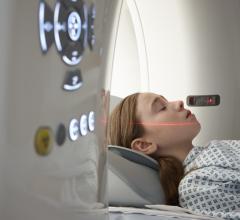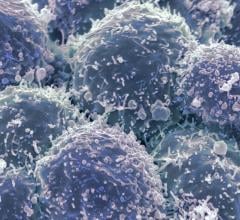May 15, 2012 - Breast brachytherapy with a strut-based applicator is a well-tolerated and effective treatment for early-stage breast cancer, according to a multi-site study with a median follow-up of four years. The research was presented as a scientific poster at the European Society for Radiotherapy & Oncology (ESTRO) World Congress of Brachytherapy in Barcelona, May 10-12.
The data from UC San Diego Moores Cancer Center and two other institutions encompasses the longest-term study to date on breast brachytherapy with a strut-based applicator. The 5-day radiation therapy, a form of accelerated partial breast irradiation (APBI), follows lumpectomy surgery.
"This longer term follow-up gives more weight to the evidence that strut-based brachytherapy is a valid option for women with early-stage breast cancer," said Catheryn Yashar, lead author of the study and a radiation oncologist at UC San Diego Moores Cancer Center.
"It's an approach women should consider," Yashar said. "Women lead busy lives and they want a radiation option that will control their cancer, spare their healthy tissue and fit into their schedule more easily than six weeks of whole-breast radiation therapy."
Other sites participating in the study were Arizona Beast Cancer Specialists (Phoenix, Ariz.) and 21st Century Oncology (Fort Myers, Fla.)
The research is based on 50 patients treated at those three different institutions with APBI using the Strut-Adjusted Volume Implant (SAVI). The poster reports successful completion of treatment in all 50 cases with favorably low recurrence rates and minimal acute and late toxicities.
"It is significant that these findings encompass patients over a median follow-up of four years since treatment - meaning we now have longer term data with outstanding results that show the efficacy of this therapy," said Constantine Mantz, M.D., a study co-author and a radiation oncologist and chief medical officer of 21st Century Oncology, the largest radiation oncology provider in the U.S. "One likely reason for these favorable findings is that this technology spares healthy tissues and directs the radiation more precisely to the immediate area that needs to be treated."
There were no symptomatic cases of seroma, fat necrosis, or breast asymmetry from radiation treatment. Rates of other side effects including fibrosis, breast pain and hyperpigmentation were also reported to be acceptably low.
The cancer recurrence rate in the study was comparable to the recurrence rate reported in the literature for whole-breast irradiation, which takes six weeks and is the traditional form of radiotherapy for early-state breast cancer.
A second study presented at the Barcelona conference, on the dosimetry of a small strut-based APBI device (SAVI 6-1 Mini), showed that the device is an excellent solution for patients with smaller breasts. The finding helps confirm the applicator's ability to make breast brachytherapy an option for more women.
The 38-month study of 72 patients, by Serban Morcovescu, MS, and physician colleagues at Texas Oncology and North Texas Hospital (Denton, Texas) showed that the breast brachytherapy device, which is the smallest of its kind, allowed for precise targeting of radiation
Strut-based brachytherapy delivers a shortened course of radiation therapy for early-stage breast cancer patients following lumpectomy surgery. The strut-based, open-architecture design allows physicians to sculpt radiation based on patient-specific anatomy, which increases the number of women who can benefit from APBI. Clinical studies show that by providing targeted radiation where it is needed most, the risks of toxicity and cosmetic side effects are reduced.
This radiation treatment is part of breast-conservation therapy, which includes lumpectomy- the surgical removal of the cancerous tissue within the breast plus tissue immediately around the tumor - followed by radiation. This approach is an alternative to mastectomy, which removes the entire breast and is often followed by breast reconstruction.
Radiation treatment after a lumpectomy has traditionally involved irradiation of the entire breast with an external beam. Besides the inconvenience of the six-week-long regimen, many women must travel some distance to receive external-beam radiation. That can put additional stress on their families, jobs, and financial resources.
For more information: www.ciannamedical.com


 July 25, 2024
July 25, 2024 








